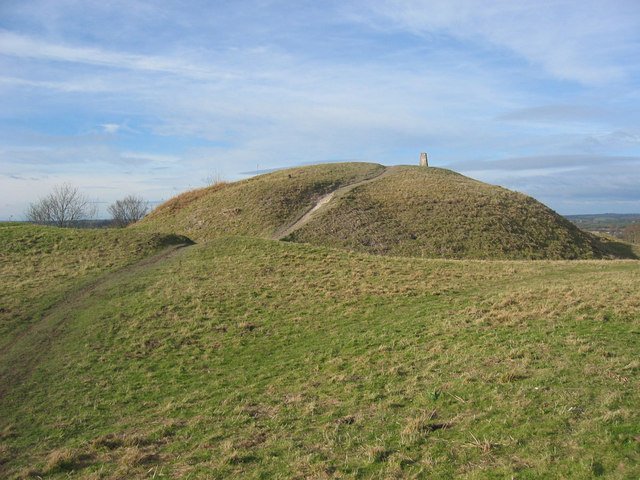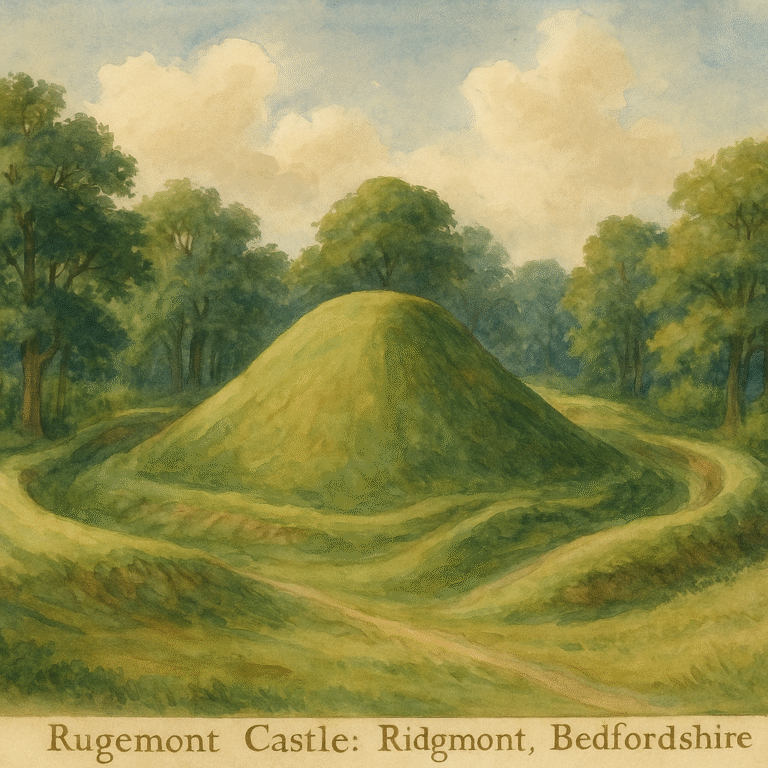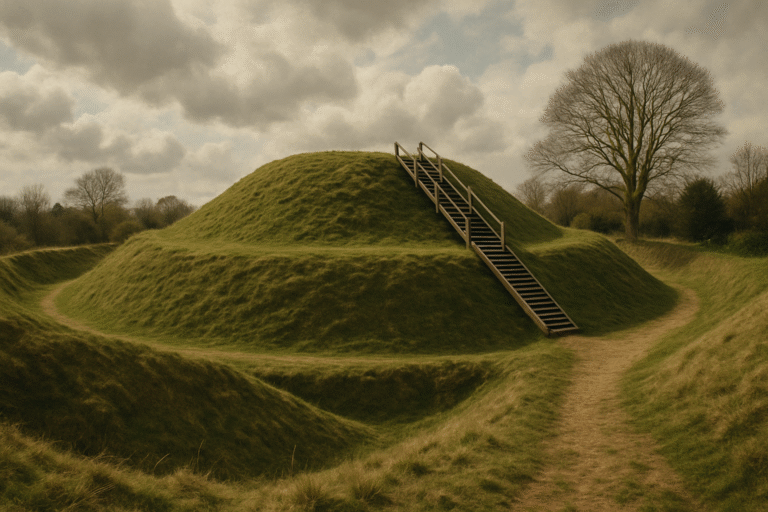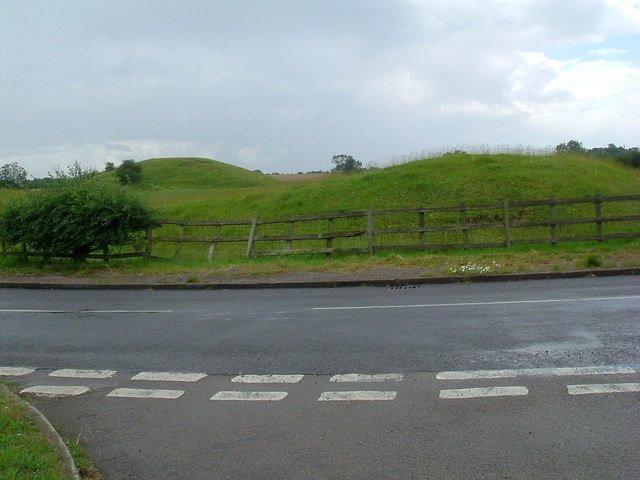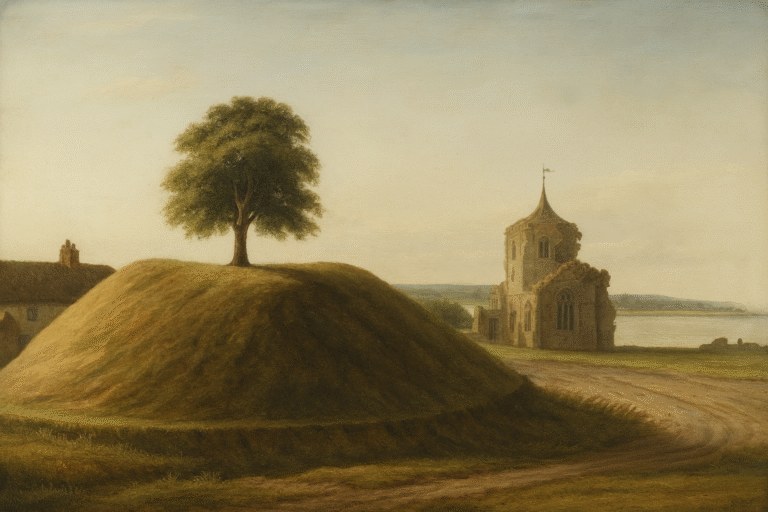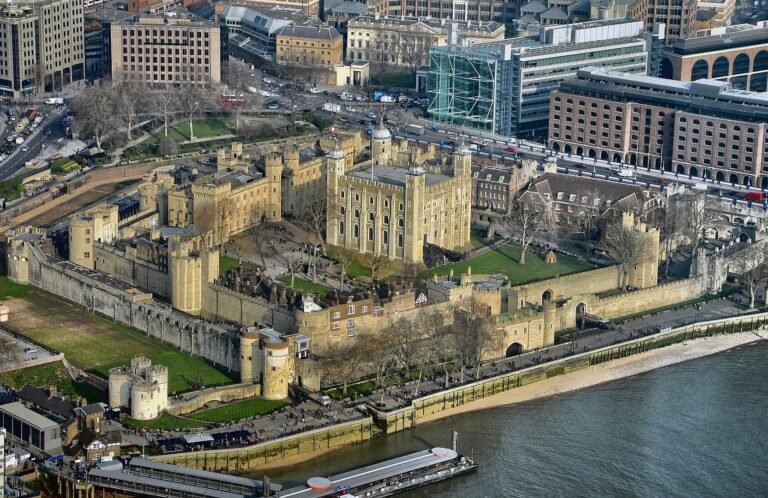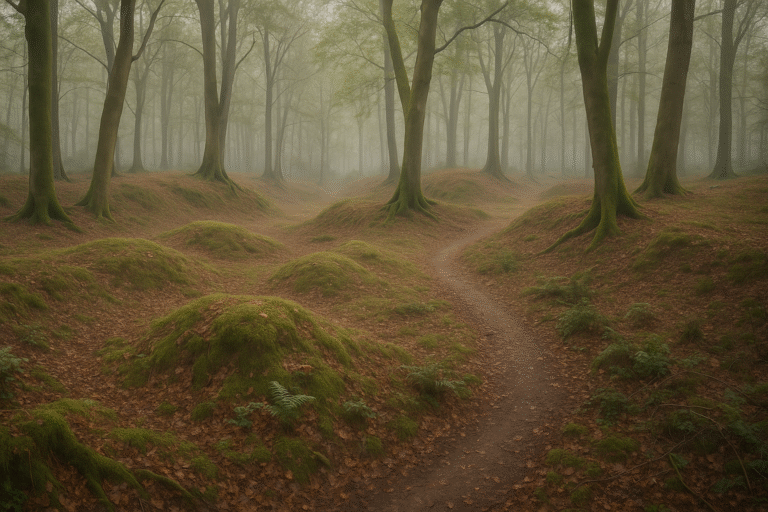Totternhoe Castle: Discovering Bedfordshire’s Hidden Norman Gem
Totternhoe Castle: Just off the beaten track in the peaceful Bedfordshire countryside lies Totternhoe Castle, a little-known Norman motte-and-bailey fortification with sweeping views over the Vale of Aylesbury. Though largely in ruins today, this quiet hilltop site tells a rich tale of medieval ambition, strategic design, and enduring local heritage. Whether you’re a history lover, a family seeking an educational day out, or a solo wanderer in search of calm and countryside, Totternhoe Castle offers a surprising dose of discovery with minimal crowds.
A Brief History of Totternhoe Castle
Totternhoe Castle dates back to shortly after the Norman Conquest, likely built in the late 11th century by order of William the Conqueror to consolidate Norman control across southern England. The motte-and-bailey design, a hallmark of early Norman fortifications, made use of the natural chalk ridge for defensive advantage. With its steep-sided motte and deep ditches, Totternhoe would have commanded the surrounding lowlands, helping to secure the Dunstable Downs and protect nearby trade routes.
Unlike stone castles that came later, Totternhoe was built primarily of earth and timber materials that were quick to assemble but less enduring. Over the centuries, it fell out of military use and gradually returned to nature. Still, the earthworks remain impressively intact and were designated a Scheduled Ancient Monument, reflecting the site’s archaeological importance.
What You’ll See Today
Today, Totternhoe Castle is an evocative ruin: a large grassy motte (raised mound), flanked by two baileys with deep ditches carved into the chalk. There are no standing walls or towers, but the earthworks clearly outline the castle’s once-formidable defences. It’s easy to imagine sentries patrolling the banks or watchfires glowing against the evening sky.
One of the site’s great appeals is its setting. Positioned on the chalk escarpment just above Totternhoe Knolls, it offers panoramic views across Bedfordshire and into Buckinghamshire. On clear days, you can see all the way to Ivinghoe Beacon and the Chiltern Hills.
Interpretation boards on-site help visitors visualise the original structure and understand its significance. The surrounding Totternhoe Knolls nature reserve, managed by the Wildlife Trust, is rich in wildflowers, butterflies, and birdlife, especially in spring and summer.
Family, Couples & Solo Travel Tips
Totternhoe Castle makes an ideal half-day outing for all types of travellers:
Families
- Educational Value: Great for school-age children studying medieval history.
- Picnics: Plenty of open space for lunch with a view.
- Wildlife Spotting: Butterflies and birds add a natural twist to the day.
Couples
- Romantic Walks: Scenic views and peaceful surroundings.
- Photography: Sunrise and golden hour shots are especially atmospheric.
Solo Travellers
- Quiet Time: Often empty on weekdays, perfect for reading, writing, or sketching.
- Walk Routes: Connects easily with longer walks through the Dunstable Downs.
Getting There & Practical Info
- Location: Castle Hill Road, Totternhoe, Bedfordshire LU6 1QZ
- By Car: Accessible via the A5 near Dunstable. Free parking is available on local streets.
- By Public Transport: Take a train to Leighton Buzzard or Luton, then a local bus to Dunstable. From Dunstable, Totternhoe is a short taxi or bus ride away.
- Opening Times: Open year-round, free entry.
- Accessibility: The path to the castle is a natural trail with some slopes and uneven surfaces. Sturdy footwear is recommended.
- Facilities: No toilets or café on site. Nearby Dunstable offers amenities.
Suggested Itineraries
1-Day Local Explorer
- 10:00 AM – Arrive in Totternhoe; walk up to the castle.
- 11:30 AM – Explore Totternhoe Knolls Nature Reserve.
- 1:00 PM – Picnic lunch or eat in nearby Dunstable.
- 2:30 PM – Visit Whipsnade Tree Cathedral or ZSL Whipsnade Zoo (10-minute drive).
- 5:00 PM – Return or dine in Dunstable.
2-Day Bedfordshire Heritage Loop
Day 1
- Morning: Totternhoe Castle and Knolls
- Afternoon: ZSL Whipsnade Zoo or Chilterns Gateway Centre
- Evening: Stay in Dunstable or Leighton Buzzard (see accommodation below)
Day 2
- Morning: Visit Woburn Abbey and Gardens (30-minute drive)
- Afternoon: Explore the market town of Leighton Buzzard or walk part of the Grand Union Canal.
Where to Eat & Stay Nearby
Places to Eat
- The Cross Keys, Totternhoe – Classic pub grub with a garden.
- The Old Farm Inn, Totternhoe – Cosy village pub with a strong local reputation.
- The White Lion, Dunstable – Traditional fare with vegetarian options.
- Priory House Tea Rooms – Lovely spot for afternoon tea in Dunstable.
Where to Stay
- Highwayman Hotel, Dunstable – Budget option with onsite dining.
- The Old Palace Lodge, Dunstable – Mid-range, charming rooms near the Priory Church.
- Redwings Lodge, Hockliffe – Good value with countryside views.
- Airbnbs & B&Bs – Totternhoe and nearby villages offer charming self-catering options.
Seasonal Events & Local Experiences
- Spring & Summer: Wildflower blooms in Totternhoe Knolls and local walking festivals.
- Autumn: Stunning views over harvest fields and glowing sunsets.
- Winter: Frosty walks with minimal foot traffic, great for quiet reflection or wintry photography.
Nearby Dunstable hosts events such as:
- Priory Church Fairs
- Dunstable Music Festival (summer)
- Whipsnade’s Christmas light trail
Broader UK Travel Themes: Exploring Norman Castles
Totternhoe Castle, though modest, connects visitors to a broader theme in UK travel: the legacy of Norman architecture. It’s part of a constellation of Norman sites scattered across England, each offering a different lens into conquest, defence, and medieval society.
Other Norman Castles to Visit:
- Berkhamsted Castle (Hertfordshire): Similar motte-and-bailey design, with more visible ruins.
- Colchester Castle (Essex): Built on a Roman temple, now a museum.
- Norwich Castle (Norfolk): Striking Romanesque keep, now an art and history museum.
- Dover Castle (Kent): A great example of a later Norman fortification evolved into a major royal stronghold.
For travellers building a heritage itinerary, Totternhoe fits neatly into a south-east England circuit exploring castles, cathedrals, and countryside. It also complements visits to the nearby Chilterns AONB, perfect for scenic walks and nature lovers.
Final Thoughts: Why Totternhoe Deserves a Spot on Your List
Totternhoe Castle may not boast turrets or opulent halls, but that’s part of its charm. It’s a place to slow down, imagine the past, and soak in England’s layered landscapes. Free to explore and rarely crowded, it offers a refreshing contrast to the more commercial heritage sites. For families, couples, and solo travellers alike, this overlooked Norman relic delivers quiet wonder and a tangible sense of history.
Pack your walking shoes, grab a flask of tea, and take the high road to Totternhoe. In doing so, you’ll join a tradition of travellers drawn to the subtle power of place and discover that sometimes, the ruins tell the richest stories.
FAQs: Totternhoe Castle
What is Totternhoe Castle?
Totternhoe Castle is the site of a medieval motte-and-bailey castle located on the Totternhoe Downs in Bedfordshire. It is an impressive example of an earthwork fortification, consisting of a large, grassy mound (the motte) and a smaller, secondary mound, surrounded by a ditch. The original wooden structures are long gone, leaving only the earthworks as a testament to its past.
Where is it located?
The castle earthworks are situated in the village of Totternhoe, near Dunstable in Bedfordshire, England. They are located within the larger area of the Totternhoe Knolls, which is a nature reserve and a popular spot for walkers.
What is its historical significance?
The castle was likely built during the Norman period, possibly in the 11th or 12th century, to control the surrounding area and act as a stronghold. The site is notable because it was built on a series of ancient chalk quarries, a unique feature that separates it from many other earthwork castles.
What can I expect to see when I visit?
You will see the remains of the main motte, which is a steep, conical hill. Nearby, you will find a smaller, separate mound that may have been a watchtower or another part of the castle’s defences. The site offers expansive views of the surrounding countryside and is an excellent place for a walk while imagining its historical past.
Is the site open to the public?
Yes, the site is a scheduled ancient monument and is accessible to the public. It is managed by a local conservation trust, so visitors are welcome to explore the area. It is a popular spot for walkers and is well-signposted from the village.
